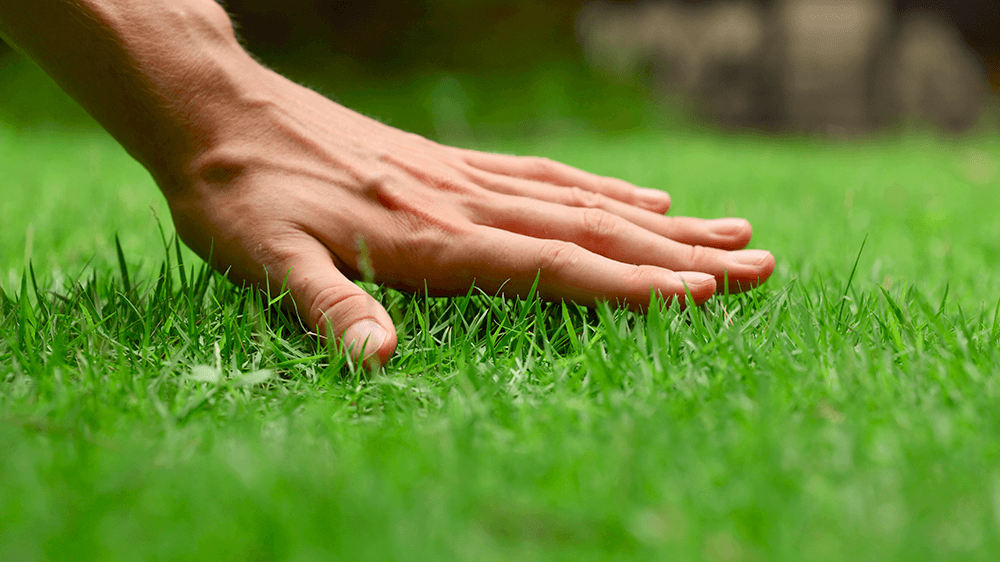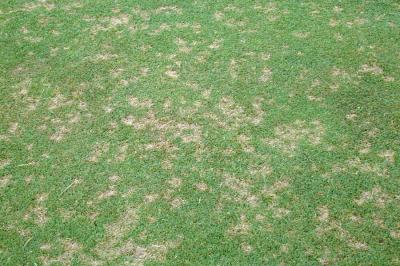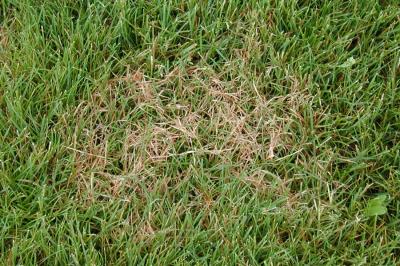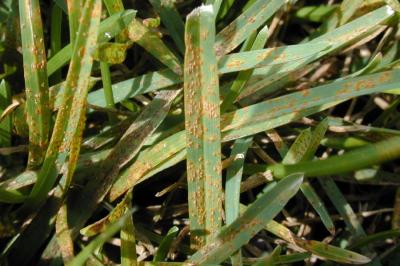
Lawn diseases are a real pain in the grass! Dealing with them effectively and promptly will save you lots of effort in the long run. Know the signs, how to treat them, and how to prevent them so that you can maintain a healthy, disease-free lawn.
How Do I Know If My Lawn Has a Disease?
There are many common symptoms of lawn disease that are easy to spot if you know what they look like. Some common examples of lawn disease symptoms include:
- Yellow, orange, red, or brown patches
- Bleached patches
- Spotty discoloration throughout grass blades
- Cobweb-like growth
- Shoes stained red from walking across turf
If you see any of these signs, you’ll need to do some more investigating to identify the type of disease and how to treat it properly!

Dollar Spot
Dollar spot first appears as dollar-sized pale spots throughout the grass. If left untreated, the spots can get bigger and start to connect, creating larger patches. Take a close look at the individual grass blades: if you see bands of light tan with reddish-brown borders, you’re definitely dealing with dollar spot.
Dollar spot thrives in dry, dehydrated grass, so watering deeply and consistently is the key to prevention. It’s better to water generously and infrequently instead of a little bit of water every day. Allow the moisture to soak deeply into the soil, dethatch the grass, and aerate your soil regularly to improve drainage. Avoid mowing your grass shorter than 3” because short grass is more vulnerable to harmful pathogens.
For severe cases, you can use a fungicide according to the package instructions, and once the issue is under control, follow up with seeding and feeding. Seed the bare patches, and use a good quality turf-building fertilizer to help jumpstart new, healthy growth. Fertilizing your lawn helps to boost its immunity against pathogens and other issues, so it’s one of the most critical aspects of disease control.

Red Thread
This fungus commonly occurs in lawns that are low on nitrogen, so it’s vital to monitor nutrient levels with soil tests in spring and fall to evaluate your soil quality. High humidity, shade, and high foot traffic can make your grass more susceptible to this fungal issue. It appears as red, thread-like branches throughout patches of grass. Some say it looks like little antlers sticking out. The grass underneath the red webbing will begin to turn pale brown.
Fungicide should be used as a last resort for red thread if it’s totally out of control. However, your best bet is to ensure you’re using a lawn fertilizer with sufficient nitrogen and avoid letting your grass remain soggy and moist for long periods.

Rust Fungus
An orange, red, or yellowish-brown dusty coating across your grass is the most identifiable sign of rust. You may find it transfers onto your shoes or clothing. Heavily thatched lawns, infrequent mowing, and consistently damp conditions contribute to rust problems. It won’t kill your grass, but it will affect its ability to photosynthesize.
Dethatch, aerate, and fertilize your lawn with a high nitrogen fertilizer in the fall so conditions won’t be favorable for rust development. Mow your lawn frequently, but keep it around 3” high. Rinse off and disinfect your lawn equipment, too, as this will help prevent further spreading of spores.
Alsip has an impressive collection of high-quality lawn fertilizers to help prevent lawn disease in Illinois and Indiana. Visit us soon so you can take the first steps in preventing future problems in your grass and landscape plants. If you need any help troubleshooting issues or identifying pathogens in your grass, feel free to ask one of our experts for some guidance!

